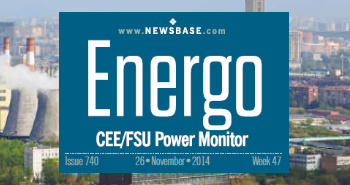MOSCOW BLOG: Commodities fall but power prices stay high
I said I was proactively looking for some good news re the economic war with Russia: well I found some. Gas prices have fallen heavily in the last weeks, as it seems that after Europe’s gas storage tanks hit the 80% full mark a month ahead of schedule traders are feeling less panicked than they did in the summer, when Gazprom started reducing flows through Nord Stream 1.
That comes on top of the immediate collapse of high wheat futures after the Istanbul grain deal in July and now prices are below pre-war levels, reflecting the fact that we are on course for bumper harvests in Ukraine and Russia. Even the war is not going to depress Ukraine’s deliveries much this year, as it still has 20mn tonnes of grain left over from last year.
So that prompted me to get my geek hat on and dive into a look at all the major commodity prices, and they are all falling – with a few exceptions such as coal.
It seems that as we come up to eight months of war, the markets have done their thing and prices are coming down as trade routes and customer deals have been remade to reflect the new realities of the sanctions regime.
But note; we are not out of the woods by a long way. Gas prices have tumbled, but they have fallen from crazy levels to simply extremely high levels; year-on-year gas prices are still up by 190%, and even last year they were already 2-3x higher than the five-year average. This war is still going to cost everyone a lot of money.
That can be seen in the US inflation figures that came out yesterday and caused a sharp sell-off on the US stock market, as the 8.3% print was higher than expected and close to a 40-year high. That’s where Russian President Vladimir Putin’s assault on the West is showing up – the still high margins on many commodities are still pushing up inflation, which is causing a rot for the whole global economy.
And there will be more shenanigans to come. Putin is making noises about “problems” with the grain export deal. Remember that the agreement was only for 120 days (it expires in November) and has been running smoothly – a sop to Russia’s African partners who were facing famine without grain supplies. However, once those customers have been moved out of danger, I’m expecting Putin to start playing silly buggers again. If you look at the commodity price curves, they are full of spikes whenever Russia does something unpleasant.
The one sector where prices have not come down is power prices, most of which are still up by c.200% y/y. I also did a deep dive into this, as it will be the issue this winter and all this concern about gas supplies is actually concern about whether the power system will work this winter. So, I thought it was time to get my head around it.
On the face of it the EU looks fine, as it generated about 3,600 TWh of power but only imported 1.8 TWh last year. However, once you dig into it there are some very big regional holes. Italy imports about 30 TWh, as it can’t meet its own power needs, and Germany has taken about 70 TWh of power offline by closing NPP and coal-fired plants, which means it will go from a net exporter to a net importer this year. On top of that, the problems with the French NPPs have taken another c.100 TWh out of the game. And to add to the “perfect storm”, thanks to the blazing hot summer the hydropower plants (HPPs) in places like Austria, another big importer of power, are half full and so can’t ramp up production either.
Going over all this and you start to see why European Commission President Ursula von der Leyen was so aggressive with her 15% reduction of gas plan, which she wanted to make EU-wide and mandatory. That would save about 120 TWh of power consumption – enough to compensate for all these problems. But it didn’t work. Most of Europe refused to co-operate.
All this has set Europe up for a nasty power crisis this winter and again Russia has huge leverage here. The problem with power is you need to match demand with supply every hour of the day and if you don’t, the power stations are simply taken offline. With Europe so close to the edge, with less than enough generating capacity to keep this balance, that means even a small lack of gas for power will cause blackouts. And as so many EU countries are depending on imports from the big ones, if you hit only a few countries like Germany, then those blackouts ripple across the Continent.
I’m not saying this is going to happen but you also start to see why Germany has been in such a panic for so many months, as it is going to be a very close run thing. I have a long piece on all this coming out later today (it will be here), but now you don’t need to read it, as I’ve made all the main points already.
This article originally appeared in Editor’s Picks, a free daily email digest of bne IntelliNews’ best stories from the last 24 hours. Sign up for free here.


Follow us online